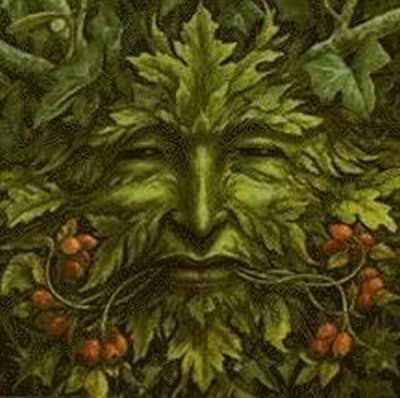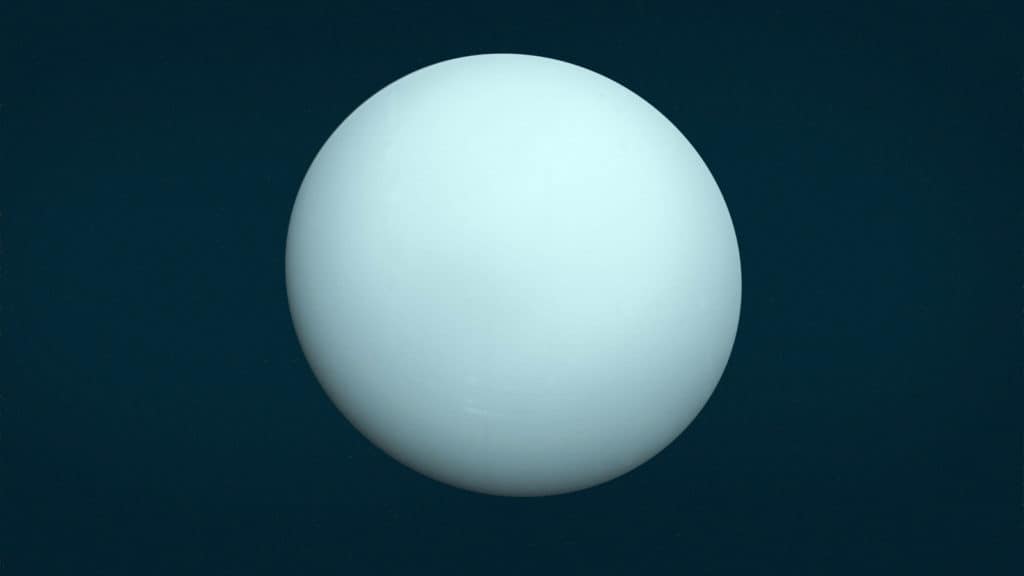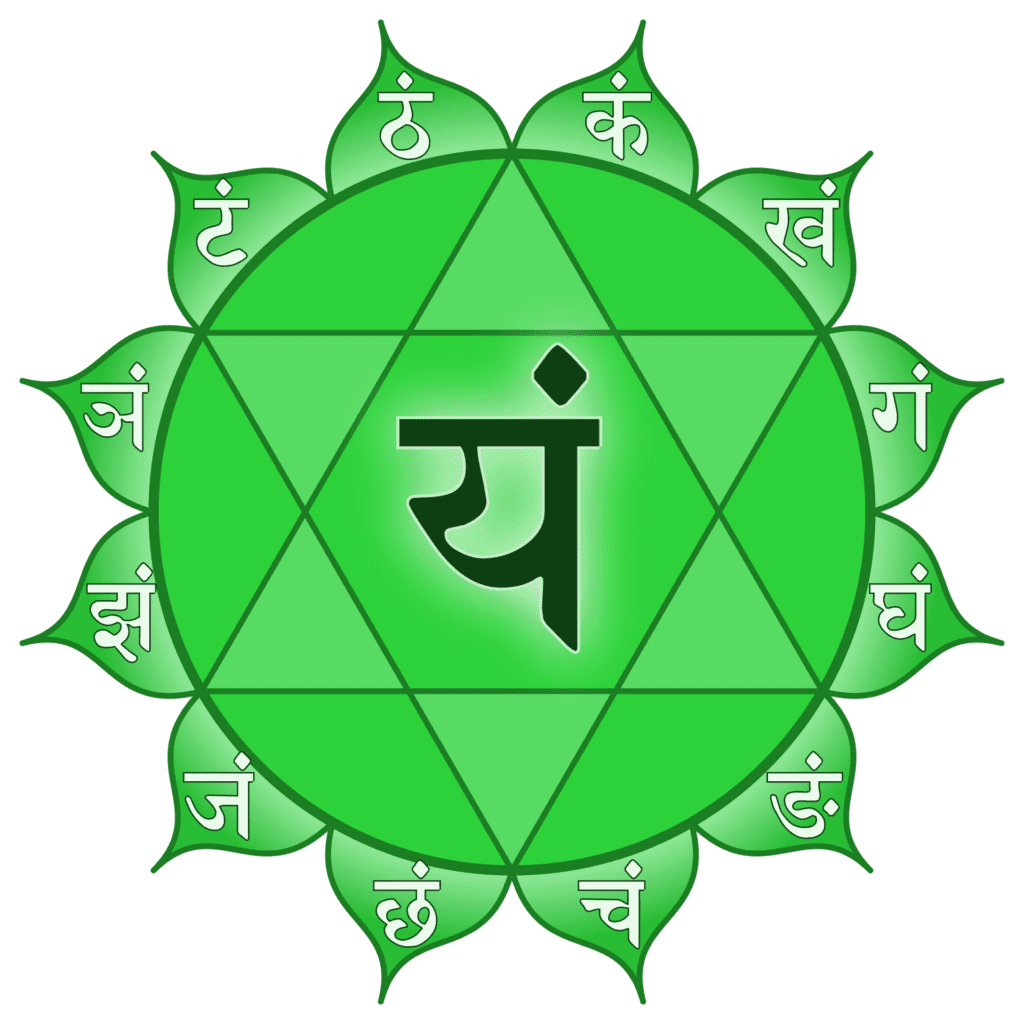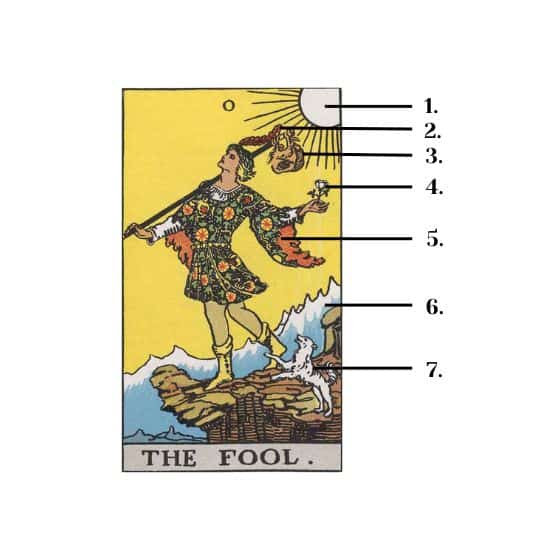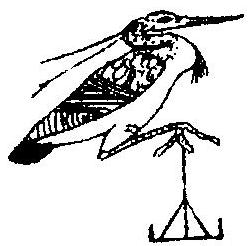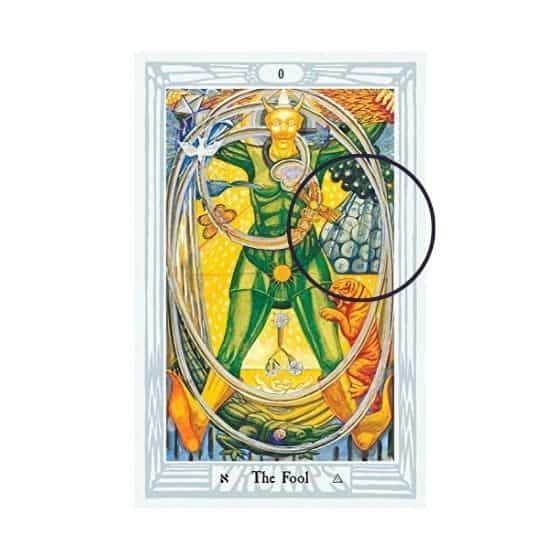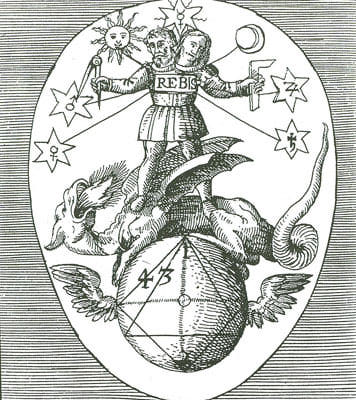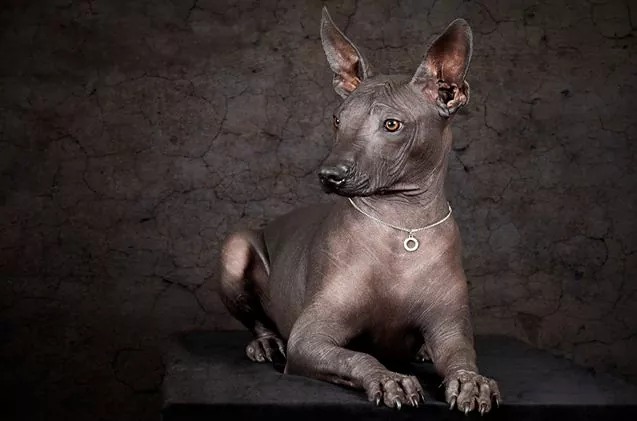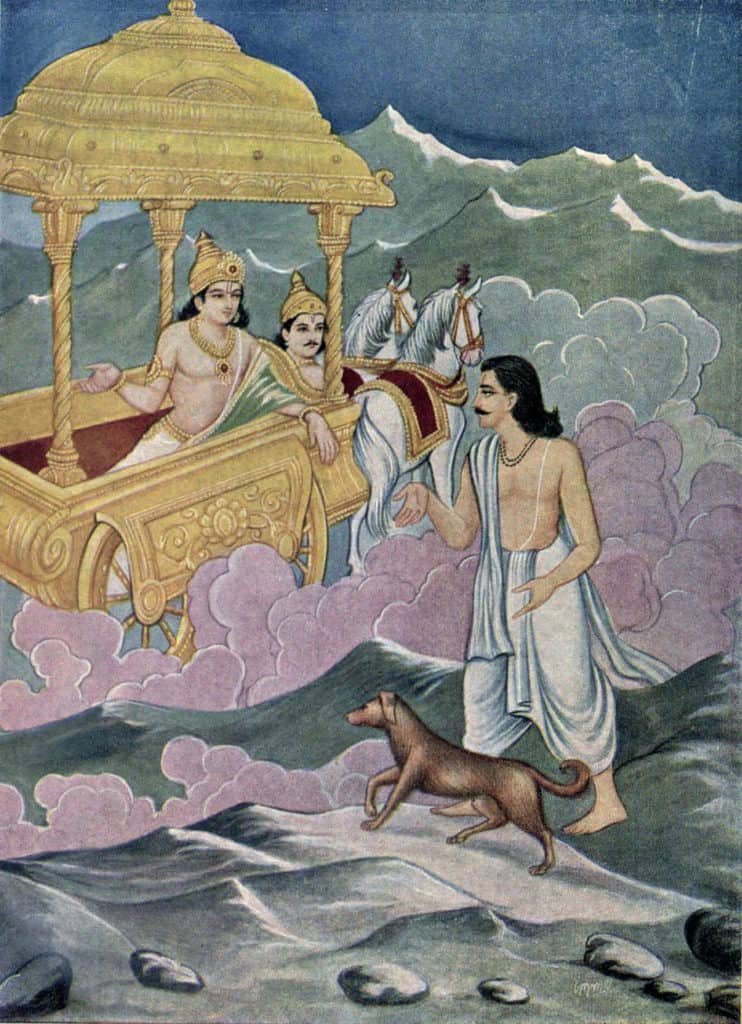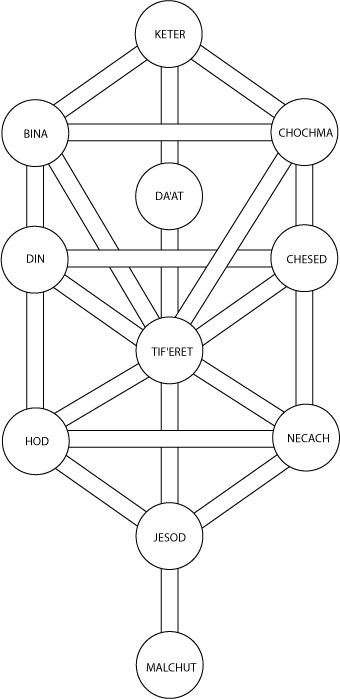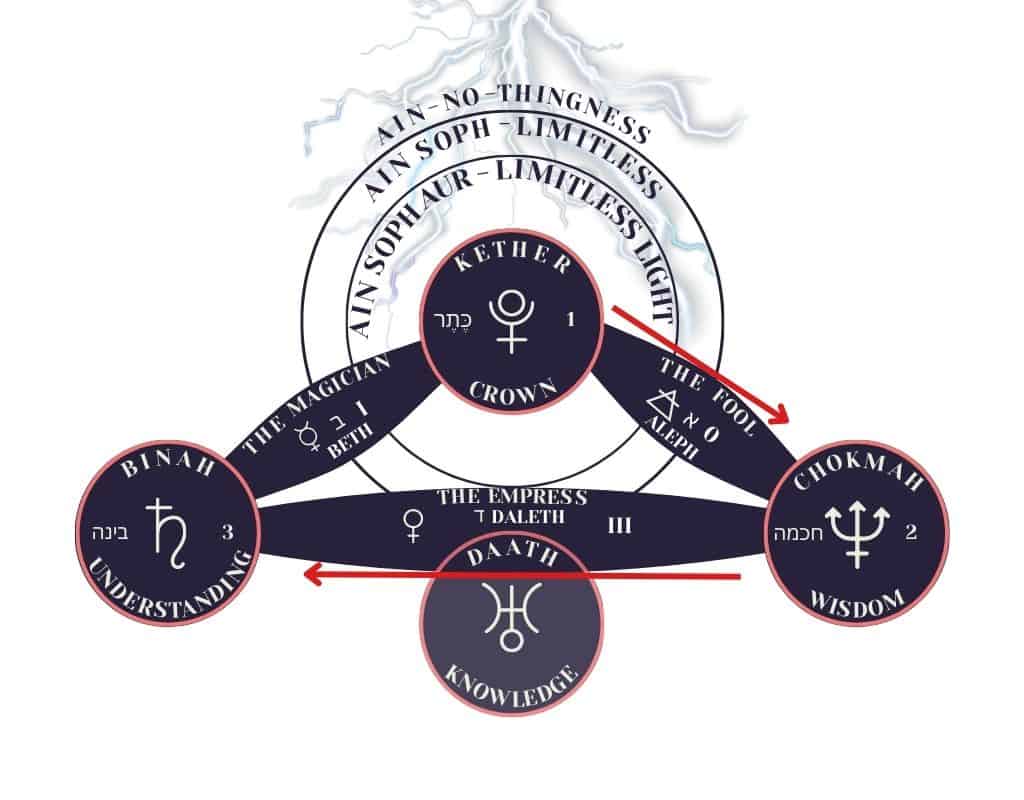When we embark on new paths, we begin the Fool’s journey. We search for “the fool tarot” on Google with bright, hopeful eyes. What juicy adventures does the Fool promise to bring?
How are meanings assigned to the cards? Why do pop sources always trust the Fool as a leap of faith or the start of a journey?
To learn the cards is to understand their symbolism. In this series, we’ll cover all the esoteric nuggets hidden in The Fool so you can deepen your intuitive knowledge of the tarot.
The Fool in Tarot: Beginning the Hero’s Journey

All things start with an idea and a desire. Before reality, a dream. The seed, then the forest. A beginning and an end. Birth, then death.
The Fool is that first inkling of desire. The first spark of creation. With the Fool, anything and everything is possible. The Fool is limitless potential and endless creativity.
This card is the very beginning of choices. It is that child-like soul, bright-eyed and ready to investigate the world. It is the first opportunity for the divine to take on material form, the moment of conception.
As we progress through the Major Arcana, think of it as the Fool shapeshifting into different forms, trying on different skins of possibilities, facing challenges, and meeting companions and guardians along the way.
The Fool makes mistakes, becomes disempowered, faces tragedy, and in the end, becomes transformed and atoned.
This is the hero’s journey.
The Fool Keywords
| Upright | Reversed |
|---|---|
| New beginnings Prophecy Leaps of faith Child-like innocence Pure potential Harmony despite chaos Revelry and wildness Innovation Spiritual ignorance Expansion Pure state of nature | Madness Overeagerness Mania Stagnation Lack of desire Carelessness/insensitivity Negligence Frenzy Rebel without a cause Denial Extravagance |
| Other Correspondences |
|---|
| Number Zero: all possible expressions and pregnant nothingness Zodiac sign: all signs Planet: Uranus Element: Air |
A Note on Reversals
Some readers don’t use them. However, I’ve included reversed keywords because it can be helpful to use them if you wish. As you grow your knowledge base and do more readings, you’ll get an intuitive feel for which valence the card’s meaning takes on.
Whether reversed or not, each tarot card can contain positive or negative valences and everything in between. In the following sections, I will not be using reversed meanings. Instead, I will refer to card placement as poorly or well-positioned.
In addition to astrological correspondences, unified color and element themes, and figure interactions, well-positioned cards have many other characteristics that gel together and support the card’s overall symbolism.
Poorly positioned tarot cards are discordant, not necessarily “bad” or “negative.” Typically they will have opposing themes such as complimentary colors (i.e., one card has a lot of yellow, and the other has a lot of blue). Or, figures on the card are facing away from one another.
It takes time to intuit the valence of a card within a reading. Ultimately it’s up to your intuition. Do the cards make you feel anxious when they are together or happy? Let your body do the talking.
Full Meaning
Before we get into the nitty-gritty, let’s review what the Fool represents in different contexts. When you have an impression of meaning, learning about how and why the picture of the Fool came to be the way it is will make more sense.
Overall
The Fool card in the tarot represents new beginnings, spontaneity, and a leap of faith. It can indicate a need to let go of old patterns and limited self-conscious beliefs to embrace new opportunities or possibilities.
If the Fool appears in a reading, the reader should take time to understand its valence. It can be an Uno reverse card if placed poorly. Despite its chaotic nature, it can show a time of taking a risk or making a bold move, despite the uncertainty of the outcome.
In any case, the Fool tarot card is a reminder to let go of the ego to embrace a spiritual perspective based on intuition and trust.
The Fool card in the tarot is a journey of spiritual awakening and enlightenment, as represented by the initiation of the hero’s journey. The Fool’s path is about rediscovering inner divinity and the source of all things.
It can be a call to question one’s beliefs and preconceptions and to be open to new experiences and wisdom, particularly with the help of others.
The Fool can also represent the idea of being a beginner and the joy and wonder that comes with that. The Fool card can remind us to approach our journey with an open mind, a sense of wonder, and a willingness to embrace the unknown.
In addition to the qualities above, the Fool card can indicate that you might receive a message soon, someone is playing a trick on you, or it can tell you you are making a reckless choice.
Health (Mental and Physical)
Regarding health and well-being, The Fool relates to the nervous system. If positioned poorly, the Fool can indicate a struggle with anxiety, back pain, nerve issues, or problems with the ankles.
A negative valence of the Fool can also indicate brain fog or issues with the spinal cord. Other issues the Fool can represent are mood swings, hypervigilance, narcissism, and tendencies toward self-destructive behavior.
In a well-placed position, the Fool can be an indication for initiating a new exercise routine, accepting current circumstances as they are if battling with a diagnosis, or changing a course of treatment.
Please note that you should not rely on tarot cards to make medical decisions.
Finances
If the Fool appears in a reading about money, there will be a dramatic change in the querent’s financial situation.
Often, the poorly placed Fool card is related to gambling gone wrong, dramatic changes tied to hubris, recklessness, or putting trust in someone blindly.
Whenever well placed, the Fool helps overcome redundancy and maintain forward momentum. The Fool does not guarantee success because it is too chaotic. The card reminds you to spend wisely, even if jumping into something with blind faith.
How to Derive Meanings from Tarot
You don’t have to rely on pages like mine to find your interpretation of the cards. All it takes is a bit of learning, a dash of curiosity, and an easy way to break out different pieces of a card into digestible parts.
It can be as easy as picking one symbol and going with it. One deep dive will surprise you with the plethora of symbolism you’ll find.
As we investigate the Fool’s symbolism, think about how I’m looking at significant themes on the card, then fracturing those themes into smaller pieces.
Each small piece represents an aspect of the Fool, like putting together a puzzle. That piece shows you a fraction of what the Fool means but still contains the card’s essential meaning and depth.
Even if you only master a piece of the puzzle, you can use that piece to extrapolate the greater whole. Remember, the tarot is a microcosmic portal of human experience.
Historical Context
The Fool tarot card is linked to a long tradition of civilized man’s contemplation of wild men and green men.
Through an examination of mythology across several centuries, we can find several vital themes: madness, unrestrained revelry, sacred knowledge, extravagance, negligence, and a pure state of nature informing the meaning of the Fool as we know it today.
Surprisingly, the Fool’s ancient origins also point to other abilities, such as prophecy, poetry, and music.
As we uncover all the secrets in the Fool tarot card, we can contemplate other themes like new beginnings, spiritual ignorance, and child-like innocence in a new light.
Tarot Card Games
The tarot originated in the Early Renaissance as a gambling game called Tarocchi. The Major Arcana was the Trumps, or high-ranking, winning cards in Tarocchi.
Of the Trumps, the Fool was the most variable, with its rules changing from region to region. Some variants of the Fool considered it the lowest Trump, others the highest.
Commonly the Fool was the Excuse card, the most valuable of the cards, allowing a player to bend the rules of the game.
Whether the highest or the lowest valued card, the Fool stood out as a wild card, always independent and mysterious.
The Fool has mostly stayed the same through the centuries in its pictorial depiction: frequently illustrated as a beggar or a madman wearing feathers, loincloths, or the clothes of a jester and carrying a staff.
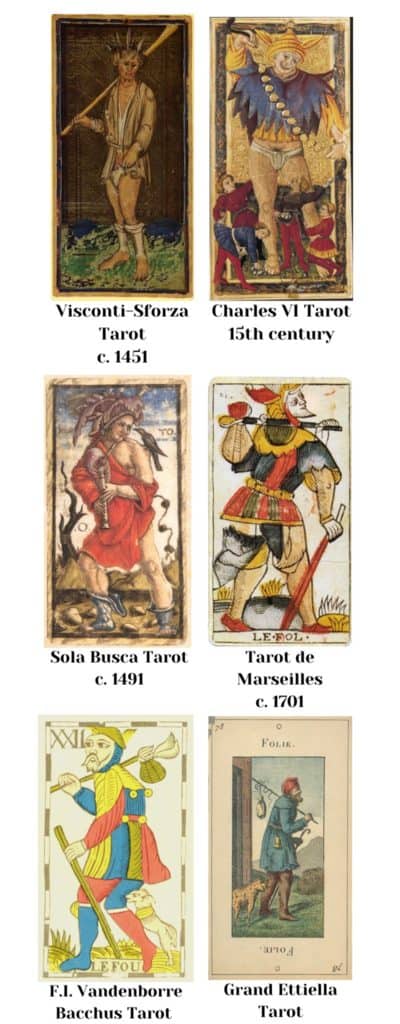
Even the Rider Waite Smith tarot deck’s depiction of the Fool shows it as seemingly careless and eccentrically dressed.
These primal visions of the Fool card allude to the mythical Woodwose or wild-man whose storied mythology offers insight into his character.
The Wild Man
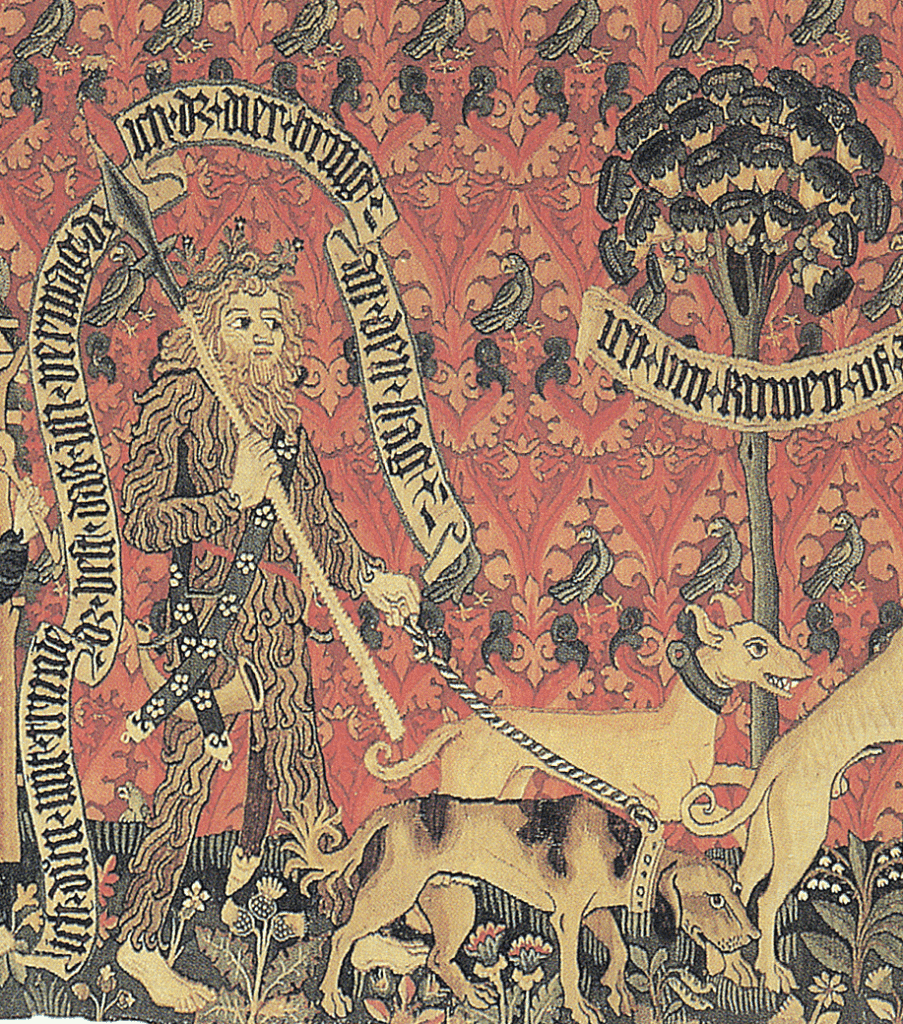
In Renaissance art, the wild man portrays a hairy, ferocious, and uncivilized man living in the woods, dancing under the light of the moon, and partaking in the wild dance and revelry often associated with the pagans.
The wild man archetype has existed for millennia. Covered in fur from head to toe, wielding a giant club or staff, and living like a beast, this creature of yore has appeared in art as early as the ancient Greeks and even in modern stories of Big Foot and Sasquatch.
We see vestiges of the wild man painted on murals in cathedrals and on heraldry, often alongside the even more mysterious Green Man. Likely the wild man represented conquering beastly tendencies, a trophy of civilized society, and evidence of man without God.
Yet, the origins of this mysterious creature likely go back further into pagan traditions. Wild men known as lutins lived in the Pyrenees mountains, dancing in the firelight to summon demons for fertility rituals.
They would burn effigies and carouse untamed, wearing nothing but grass, leaves, and moss to appease the spirits of the forest for bountiful harvests.
Despite the persecution of pagan beliefs in a Christian-dominated world, certain practices continued, albeit modified. A custom in medieval Europe known as charivari closely resembles pagan superstitions and rituals.
Villagers would perform charivari during harvest or planting seasons. Screaming, banging on pots and pans, dancing maniacally, loud off-key music, and effigy burning was commonplace during such parades.
Alternately, the charivari would denounce the sins of a community member, or publicly humiliate unsavory characters, harkening this practice back to pagan traditions such as the Bulgarian kukeri who performed wild man rituals to scare away evil spirits.
The Epic of Gilgamesh (2nd Millennium BC)
This image of half man half beast takes us back to the ancient Akkadian legends from The Epic of Gilgamesh. A man named Enkidu, created by the goddess Aruru to stop Gilgamesh, King of Uruk, from abusing his people.
First created as a savage half man, half bull, Enkidu was the personification of the force of nature: wild and untamed.
Enkidu was domesticated by a sacred prostitute, eventually becoming King Gilgamesh’s best friend, warrior, and moral guide.
The Epic of Gilgamesh marks Enkidu’s name with a dingir (?), a cuneiform symbol for the Divine, or an ideogram that means “sky.”
Enkidu’s adventures with Gilgamesh bring the wild man closer to civilization: he becomes more and more refined until he renounces his beastly origins entirely.
The Green Man
In Southern Germany, a ritual called Pfingstl was the celebrated welcome of spring wherein a Maypole was erected, and a young man dressed in vines, moss, branches, and leaves was brought from the woods under fanfare and laughter.
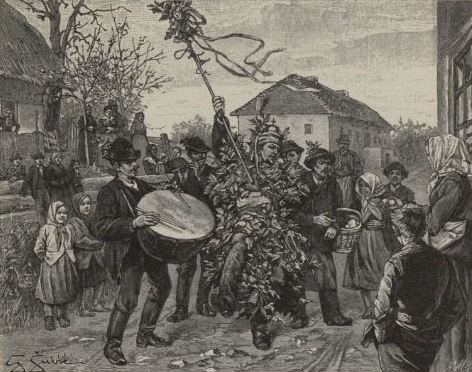
His face was covered with green branches and tree bark, and the village folk made a game of guessing who was hidden under the disguise. Like Enkidu’s evolution into a civilized man, this ritual symbolized taming the wilds.
In England, the celebration of May Day was marked by Jack o’ the Green, a precession filled with music, dance, cascading flowers, and a central figure wearing a human-sized conical wicker covered in vines and leaves.
The celebration of Spring with the iconic imagery of the Green Man is old, dating back to the Ancient Greek god Pan who ruled over the wild lands, music, impromptu celebration, and fertility.
Pan taught the god Apollo the gift of prophecy. Prophetic visions are linked to religious ecstasy resulting from manic celebratory worship or entheogens in the popular libation, kykeon.
These rituals and others served to herald a season of renewal and new growth – the Spring season and promise of fertile lands. Spring is the beginning of a new cycle of seasons represented by Aries, the first sign of the zodiac.
Synthesizing Historical Context
Just as Spring launches new growth, we can also think of the Fool as one of the first divine emanations of God, or cosmic force, to begin to experience the life cycle on Earth – a process of the soul from spiritual ignorance back to manifest insight.
The common theme here is death and rebirth, signaling that the Fool is on the threshold of this imminent, eternal cycle.
Prophecy, revelry, excitatory states of joy, and transformational visions known by the god Pan and practiced in wild man, Green Man, and Greek Mysteries rituals allude to the Fool’s capacity of limitless potential and its function as the lightning bolt of desire to take form.
When all things possible lie before a dreamer, it’s like a sandbox game. Anything can be created; any form can be taken. This is the Fool’s capability of turning joyous revelation and lightening insight into shape.
Simultaneously this power of creation, when done under ignorance and without pure intention, can turn into madness, carelessness, and panic. Like a trickster god whose abilities match that of the creator, drunk on power, messing with human minds, and wreaking havoc for the fun of it.
Ultimately, the Fool is a wild card. Its messages can appear volatile and chaotically neutral. The Fool is a divine contradiction: boldness, recklessness, ignorance, and innate wisdom. Yet it is also crucial to initiating the path to enlightenment.
Finally, the Fool offers a choice to dive deeper, launch yourself into new endeavors, expand your inner light, and keep following that yellow brick road.
Other Correspondences in The Fool Tarot Card
When looking at a card, every single design choice counts. Tarot was carefully crafted to include breadcrumbs of esoteric history and symbolism.
Therefore, investigating any one symbol of the card will bring you a wealth of information to help you learn the card. There are 6 categories of symbols that you can look at:
- Astrological correspondences
- Colors
- Objects (buildings, tools, clothes, etc.)
- Cultural or religious symbols
- Hermetic Qabalah
- Persistent symbols within a suit (water, pyramids, nature, etc)
- Figures (people, the directions they face, whether they are active or inactive)
We’ve already covered persistent symbols and figures through our historical exploration above. The remaining correspondences have the same rich meaning. They will all contribute to the Fool’s character and representation in unique and blending ways.
Relationship with other Major Arcana Cards
The most important theme across most of the Fool tarot card’s correspondences is the soul cycle from death to rebirth.
The soul cycle relates to the energies of the cosmos perpetually ascending and descending from ethereal to gross form. The process occurs spontaneously and synchronously, meaning it is not a linear path. This cycle affects all things, animate beings, and in distinct degrees.
Incredibly, the tarot cards evoke allusion to this cycle, notably in the Fool tarot card and its connected card compatriates.
The Fool, Death, and The Sun
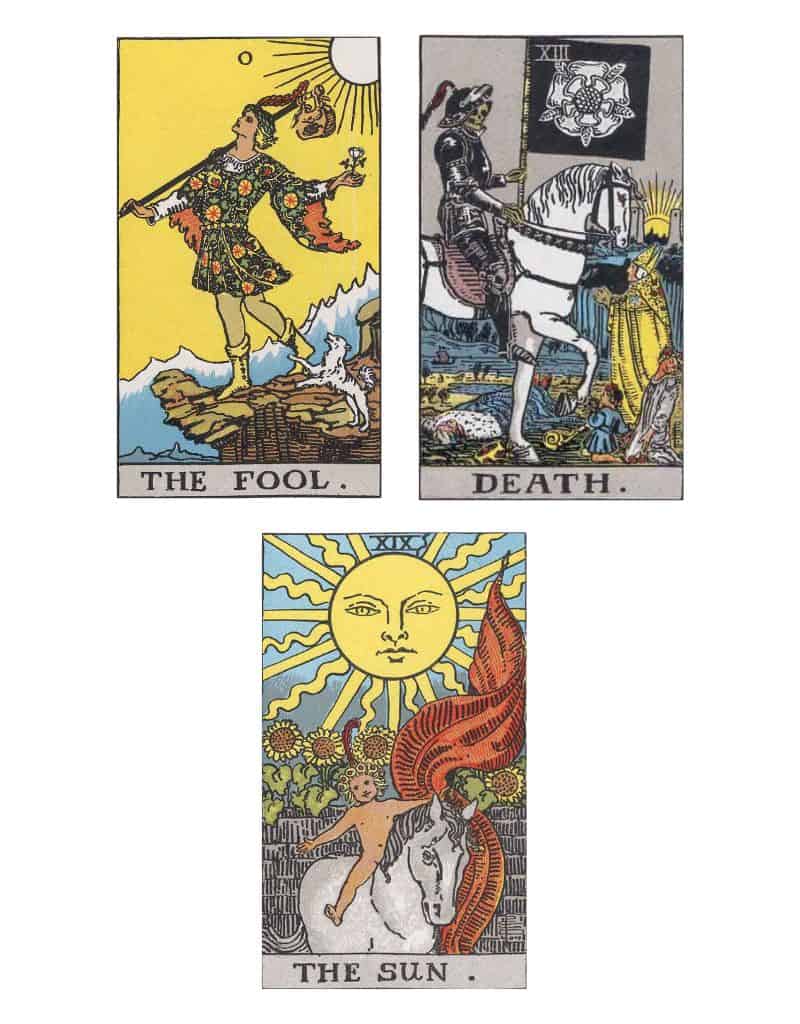
The Fool, Death, and the Sun tarot cards share a key trait: the feather. As mentioned in the earlier correspondence section, the feather is likely that of the Bennu bird.
In mythology, the Bennu spontaneously came into existence. Like Ra, the god of the sun, the Bennu’s birth is attributed to self-generation renewed with the rising sun.
He is said to have flown over the chaotic waters of creation. Upon landing on a rock, he cried out and broke the primeval silence determining what was and was not to unfold in creation.
In addition to its relationship with creation, the Bennu bird was inscribed in funerary amulets and objects, frequently on the back of a scarab. The Egyptian Book of the Dead writes, “I am the Bennu, the soul of Ra, and the guide of the gods in the Duat.”
Moreover, its feather is a powerful symbol of regeneration, perfectly encapsulated through the Fool’s journey through Death, and eventual rebirth as the Sun.
Since the Major Arcana represent the soul’s evolution from ethereal to material, the Death card is an essential turning point. The setting sun initiates us into the netherworld: facing shadows, demons, judgment, and releasing that which no longer serves.
The Fool, Wheel of Fortune, and Judgement,
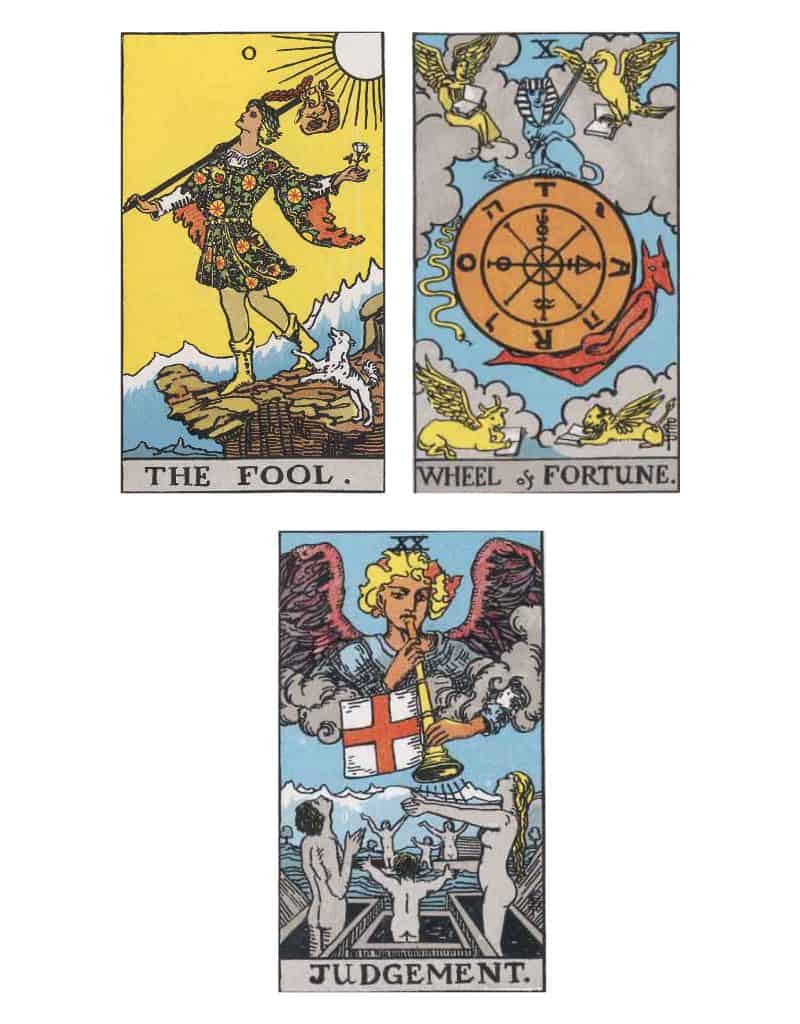
After Death, when the Sun rises again, a fresh babe is born, pure and free of the shackles and chains. This is an essential journey the soul must take on the spiritual path – the dark night of the soul and eventual resurrection.
These themes are represented clearly by the Wheel of Fortune and Judgement. Their connection to the Fool tarot card lies in numerology: the Fool is 0, Wheel of Fortune 10, and Judgement 20.
These cards share the number 0. In numerology, zero represents beginnings and endings, absolute nothingness, freedom from limitation, and infinity.
The powerful imagery in the cards evokes “zero” themes. The Fool moves through the spiritual journey and encounters the wisdom of the Wheel of Fortune: everything that goes around comes around. After Death, the resurrection.


